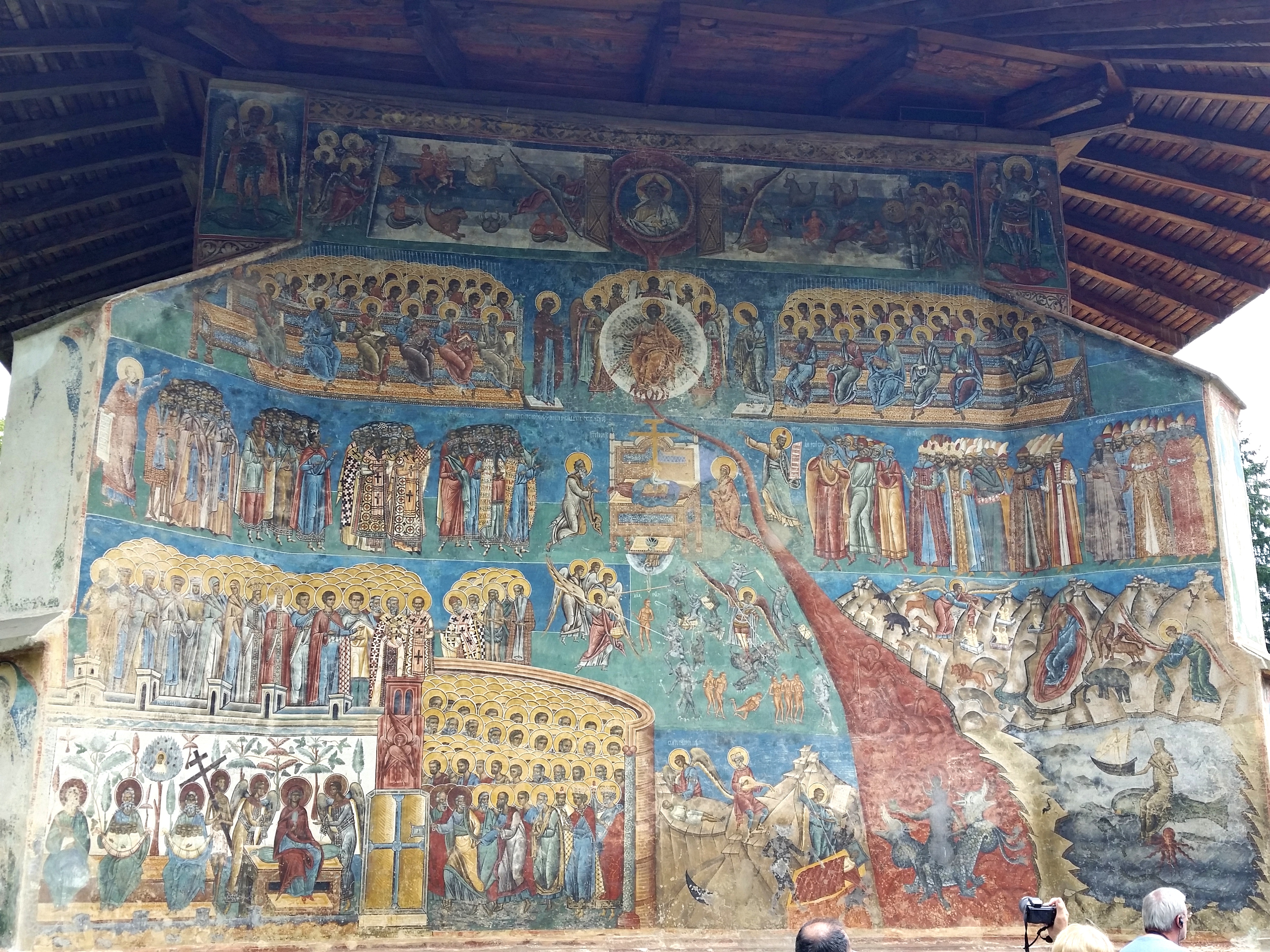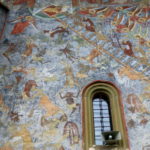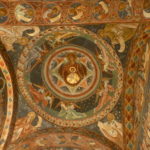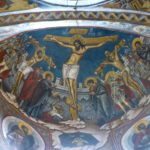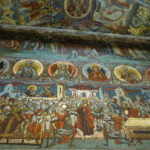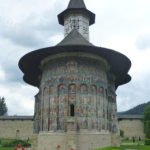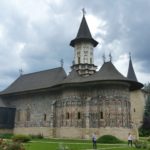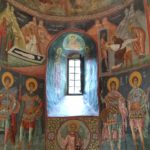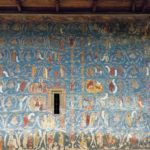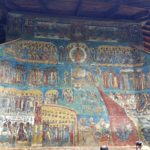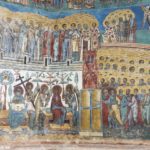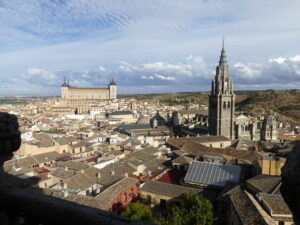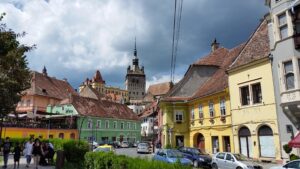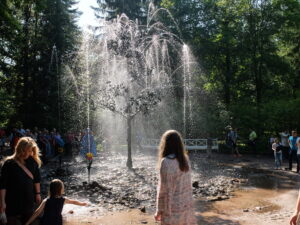The Orthodox religion flourished amid the rugged hills and rich valleys of Moldavia, the kingdom of eastern Romania. Influence from Slavic lands and old Constantinople made eastern Christianity strong here. By the middle ages, Moldavia’s princes often honored God and themselves by building Orthodox churches richly decorated inside and out. The profusion of images from the 14th to 16th centuries included tales of the saints, Christ’s life, tributes to Mary, as well as the heritage of the past and prophesies of the future. The visual splendor created a kind of paradise on earth, which even today – at a dozen or so World Heritage churches – attracts a good deal of piety and prayer. In one, we found ourselves participating in the service. In each, we felt transported with aesthetic delight; perhaps you will too. (Note that you can click the images for full-size display.)
See this article for the very different wooden churches of Romania.
— As this large outside wall affirms, we all aim to ascend the ladder to heaven, but we don’t all make it there. The good continue on. The bad fall through or are pulled down to the torments of hell.
— Most of the churches contain two domes, one in the middle section with Mary at the top and one at the altar with Jesus. Both demonstrate a visual transcendence. The square in the circle is formed architecturally as the dome meets the walls. It’s also painted at the top (and in other scenes) for emphasis.
— A vivid crucifixion scene in a half arch.
— Three scenes from the Passion that are typical in the churches, but appear here as a unified ensemble – from left to right, Pilate washes his hands of blame; Jesus is tormented by soldiers; the traitor Judas tries to return his payment. In the dark corner at the right, nearly hidden, Judas hangs himself in shame. Atop it all are images of saints and other incidents.
— The great wall of martyrdom also typical in the entry to the churches. These saints demonstrate there are many ways to die for your faith, a very gruesome array if you pay attention.
— Within the altar area, a painting always honors the donor of the church (represented as a miniature) and the donor’s family, which presumably gains grace down the generations.
— The extraordinary detail covering the walls is demonstrated everywhere, including this exterior decoration of the apse at one church.
— Exterior of one of the most colorful Orthodox painted churches. The three sections proceed from west to east, with the rounded apse as the most holy section, the closest to heaven. We went into the apse during a tightly packed service, trying not to disturb the ceremony. After a while we realized that men were standing on the right and the women on the left, so we shifted places accordingly. Then suddenly everyone kneeled down in prayer. The nearest ones moved about to make room for us, so we too got on our knees. We soon realized that they were preparing for blessing and purification by the head priest, who proceeded through the three sections to touch each person’s head with a censer. We left as discretely as possible when we could.
— Guardians of the faith with the entombment.
— Exterior of a church showing the often repeated tree of Jesse, the birth heritage of Christ back to the Old Testament and the ideological heritage back to the ancient philosophers.
— The Last Judgment at the west wall of one church, with the good and the saintly ascending from the left, a kind of purgatory on the right, and the slippery slope to hell in the red chute.
— Detail of the Last Judgment, with the three Old Testament fathers – Abraham, Isaac and Jacob – on the bottom left.
(Also, for more pictures from Romania, CLICK HERE to view the slideshow at the end of the itinerary page.)


